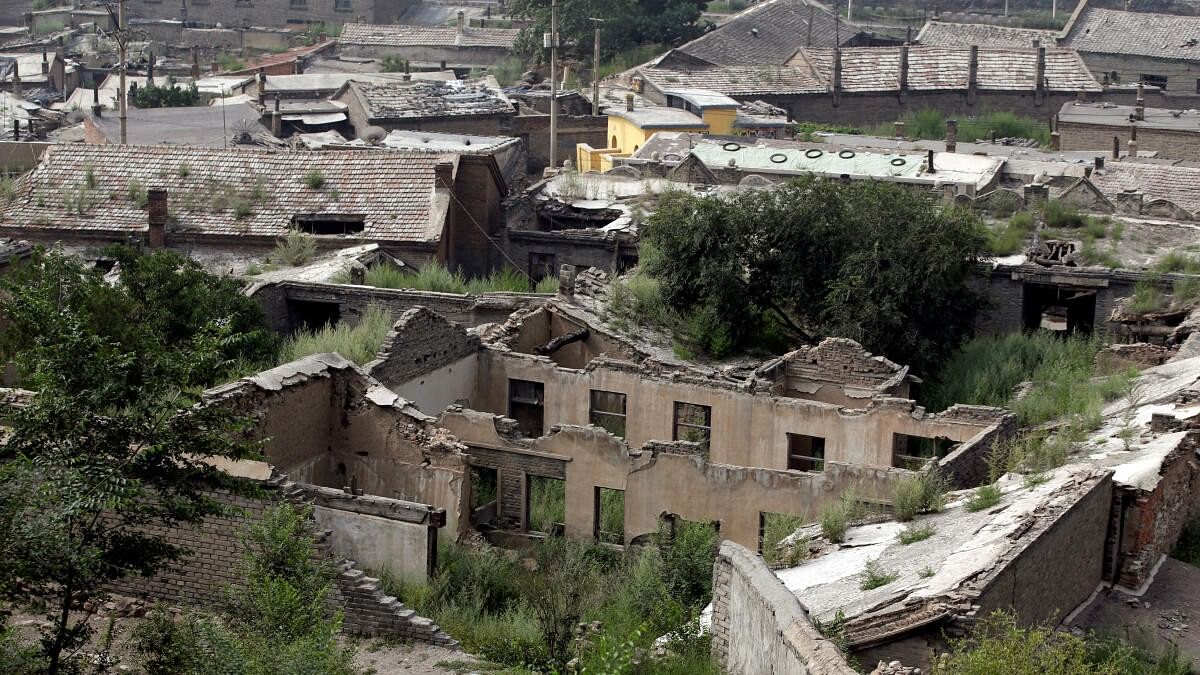
Abandoned houses are seen in an area where land is sinking near a coal mine in Kouquan township of Datong, China's Shanxi province
Credit: Reuters Photo
New Delhi: About a third of China's urban population is estimated to be at risk due to land subsidence, shows a new finding which researchers said is indicative of a global phenomenon.
China's urban area below the sea level could triple by 2120, potentially affecting 55 to 128 million residents, it found.
Using satellite data, the research team studied 82 cities, including Shanghai and Beijing, with a collective population of nearly 700 million people.
The team, including researchers from the University of East Anglia, UK, found that 45 per cent of the urban land area analysed was sinking, with 16 per cent sinking at the rate of 10 millimetres a year.
Hotspots included Beijing and the coastal city of Tianjin, they said.
The study estimated that 270 million urban residents could be affected, with nearly 70 million experiencing rapid subsidence of 10 millimetres a year or more. The findings are published in the journal 'Science'.
Caused mainly by human activities in cities, land sinking can also reinforce climate change and sea-level rise, thereby specially affecting coastal cities including Tianjin, the findings showed.
Subsidence is considered to be primarily driven by groundwater withdrawal, which lowers the water table, along with geology and weight of buildings.
Upon combining subsidence with sea-level rise in their analysis, the researchers found that China's urban area below the sea level could triple by 2120, potentially affecting 55 to 128 million residents. This could be catastrophic without a strong societal response, they said.
Shanghai, China's biggest city, was found to have subsided up to 3 metres over the past century.
The researchers said that while consistently measuring the sinking of land is important, models predicting subsidence should consider all factors, including including human activities and climate change.
Not accounting for land sinking in adaptation and resilience plans now could potentially risk destruction of lives and infrastructure in the coming decades, they pointed out.
Deccan Herald is on WhatsApp Channels | Join now for Breaking News & Editor's Picks